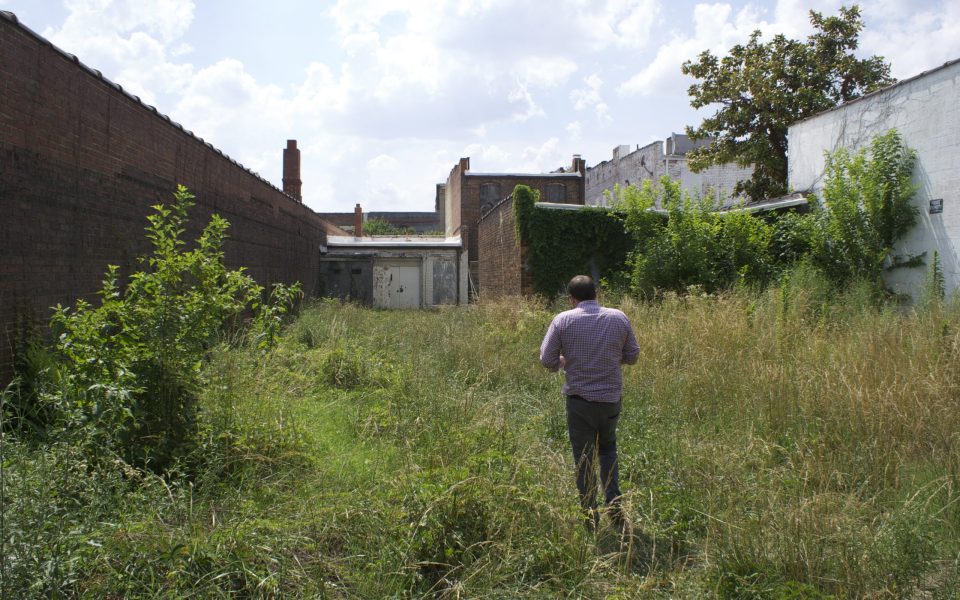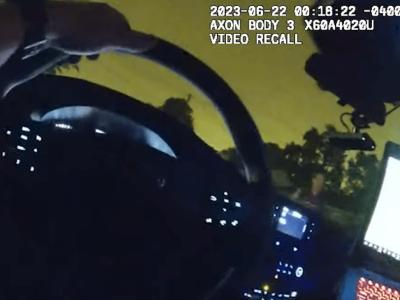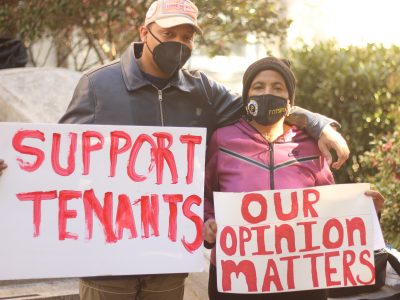by Eric Ginsburg
A new grant will allow Elsewhere Artist Collaborative to create art in unused public space and encourage long-term civic engagement in downtown Greensboro.
For a decade, George Scheer and downtown other artists have been staring at a fence behind Elsewhere. The grassy area behind the building sat unused between a series of vacant buildings, a visual reminder of Greensboro’s economic stagnation in the city core. But that’s all starting to change, and quickly.
The fence recently came down and new tenants are moving in. The back patio of Greensboro’s Makerspace is at the far end of the overgrown patch, and Elsewhere’s informal back patio has expanded with a metal shelving unit for the space’s growing garden.
The narrow, unevenly bricked alleyway behind the building runs from Bain Street where people often park for Mellow Mushroom to Lewis Street near Lotus Lounge and is cluttered with fire escapes, trashcans and air conditioning units. But now, Scheer said, the alley and grassy area are one of four sites in downtown’s South End that will be sites of temporary artist interventions.
Elsewhere announced last week what people downtown have been murmuring about for a while — that it received a $200,000 ArtPlace America Grant run by a consortium of foundations to transform four green spaces and alleyways near the artist collaborative. Drawing in more than 20 local and national artists, the “artscaping” project aims to create public space and community engagement, Scheer said.
It’s far too early to say what types of specific art might be installed or incorporated into the sites — that will depend on the artists and a process that pulls in neighbors and other interested people — but Scheer has plenty of ideas. He also has some specific questions, ones that Elsewhere has been grappling with for years, that he hopes the grant will let them dig into.
How do you use art to create public space and engagement? Is there a way that the temporary interventions can lead to longer-term community engagement and more equal access to our public spaces?
The artscaping project can be a catalyst or opening to a conversation about creative solutions to city issues, he said, like addressing solid waste. But it could also give artists and residents the chance to make significant imprints on the culture and vibe of a downtown area Scheer believes is on the brink of massive economic investment and transformation.
The area around Elsewhere already has a distinct character, especially with an expanding number of places where people are making things, Scheer said. That includes Elsewhere, the artist studios at Artmongerz, a nearby piano-repair store and the forthcoming Makerspace and Gibb’s Hundred Brewery. The ArtPlace grant may be a way to secure that character in advance of what could be a cultural shift in the area as more money pours in, he said.
There are already a number of active green spaces downtown including three community gardens, one of which is at Elsewhere, and Scheer said they will be looking for artists with experience in greenscaping. Elsewhere will also be seeking artists with skills in programming, lighting and creating featured artwork that will go in the spaces, he said.
Walking from site to site, Scheer threw out ideas of several mediums that could be employed, including colorful lighting, projections… even soccer goals.
The most visible site is the underutilized corner of Elm and Lewis streets where two seemingly forgotten trucks have rested for years, while two other sites, including the alley behind Elsewhere, are somewhat forgotten and unused spaces along downtown’s backsides. Each one is distinct, but the most obvious outlier is an overgrown field on Bragg Street that will eventually abut the planned Downtown Greenway. The site is the farthest from Elsewhere, though still just a couple of blocks down South Elm and across Lee Street.
The diversity of sites — though all look relatively discarded — is intentional, Scheer said, but will deal with the same questions about access and creating places of interest between existing downtown destinations. And while the timeframe for some of the artist installations and interventions may be temporary, Scheer hopes that dealing with some of those larger questions will produce a lasting impact.
Join the First Amendment Society, a membership that goes directly to funding TCB‘s newsroom.
We believe that reporting can save the world.
The TCB First Amendment Society recognizes the vital role of a free, unfettered press with a bundling of local experiences designed to build community, and unique engagements with our newsroom that will help you understand, and shape, local journalism’s critical role in uplifting the people in our cities.
All revenue goes directly into the newsroom as reporters’ salaries and freelance commissions.





Leave a Reply